Eco-Friendly Fall Lawn and Garden Tips
- horticulturist and gardening expertSeptember 20, 2025
Many of us are looking for ways to make our landscapes eco-friendly and beautiful. Creating a sustainable landscape can help minimize the negative impact on the environment by conserving resources, wasting less, and using more environmentally friendly practices. Doing this can help you create a healthier landscape that’s better for the environment and your community.
Now is an excellent time to begin. Turning your existing landscape into an eco-friendlier one takes planning and time. Starting with a plan and making needed adjustments over time will help you avoid creating excess waste, using more energy, and damaging the soil while making the transition. But there are some things you can do this fall to start making your landscape more sustainable.
Sustainable Landscape Design Ideas
Evaluate your existing landscape design and look for opportunities to make it more sustainable. Identify the health of existing plants and the maintenance needed to keep plants, planting beds, and the lawn healthy.
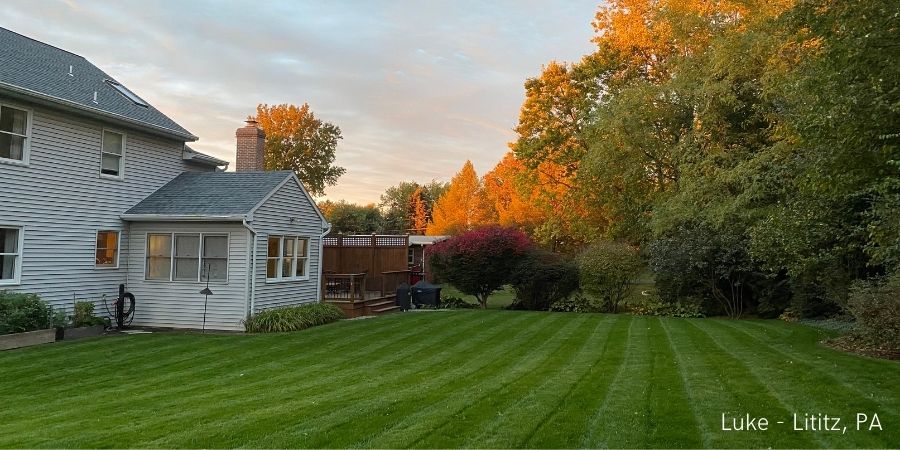
In some cases, adjusting how you care for your gardens and lawns may be all the change that is needed. Using fall leaves as mulch, creating compost from plant-based kitchen scraps and landscape trimmings, and leaving clippings on the lawn are just a few ways to be more sustainable. When this is not enough, consider replacing plants and redesigning the gardens and lawn areas that require lots of resources like water, fertilizer, dividing, pruning, and your time to maintain.
Once you evaluate what is working and what needs changing, develop a plan and timeline for converting your existing landscape into one that is more sustainable. Look at individual elements in the landscape and how they fit into the overall design.
Consider phasing in the changes over time when creating a more sustainable landscape. This allows you to spread the cost as well as the time and effort needed over a longer period. Continue evaluating and fine-tuning at each phase of the plan, allowing you to create a sustainable landscape that best meets your aesthetics and gardening goals.
DIY Sustainable garden
Make your garden eco-friendlier starting this fall. Don’t rake your leaves to the curb or haul them to the recycling center. Put them to work in your gardens to help improve the soil. Shred your leaves with the mower and incorporate them into vacant annual flower and vegetable gardens. They break down over winter and help improve drainage in heavy soils and the moisture-holding ability of fast-draining soil. Or go no-dig and use fall leaves to help create garden soil with lasagna, Hugelkultur, or the deep mulching method.
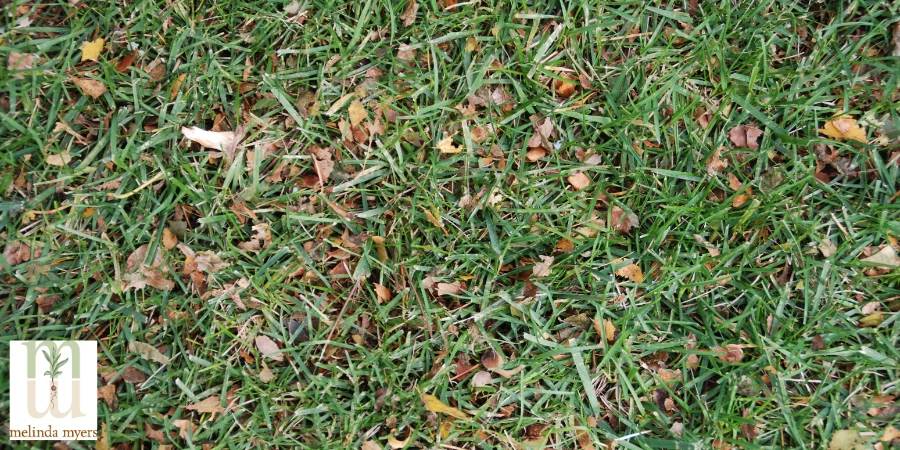
Use a layer of fall leaves as mulch around existing plants. It helps protect the soil, conserve moisture, suppress weeds, insulate plant roots from temperature extremes, and improve the soil as the leaves decompose. A layer of leaf mulch also provides homes for some beneficial insects and wildlife and insulation for queen bumblebees, toads, and others overwintering underground.
Topdress perennial gardens every few years to improve the soil and the plants’ health and beauty. Spread a one-to-two-inch layer of compost over the soil surface surrounding the plants. Earthworms, ground beetles, and other soil-dwelling organisms will help move the compost into the soil.
Do a bit more for struggling perennial gardens that are not bad enough to replace yet need improving. Use an auger bit on a cordless drill to create openings and help push some of the compost into the soil in bare areas of the garden.
Leave healthy perennials standing in the garden overwinter. They add texture, motion, and interest to the winter garden. Many provide winter homes for beneficial insects and food for songbirds.
Take the next step to creating a more sustainable garden. Identify high-maintenance and moisture-guzzling plants. Begin replacing them with plants better adapted to the climate and growing conditions. Make sure the plants you select, whether native or cultivated, fit the available space and are not aggressive, requiring regular division to keep them from overtaking the garden. Avoid invasive plants that create more work for you and can invade nearby natural areas, crowding out native plants and damaging the ecosystem.
Compost those plants that are not suited to the growing conditions. You’ll be converting them into organic matter and placing them back in the garden in a different form. This practice also helps reduce the need to buy outside resources, an important component of sustainable gardening.
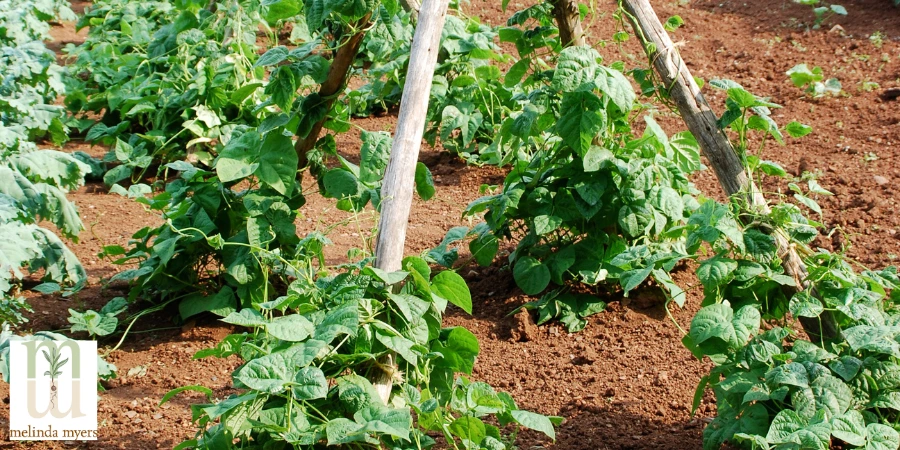
Convert twigs, branches, and trunks into arbors, supports, and fencing. Leave dead tree trunks that don’t create a hazard standing and fallen logs in place, if acceptable. These provide homes for a variety of birds and pollinators. Chip remaining tree and shrub trimmings into mulch to use around trees and shrubs and to create pathways. Join forces with your neighbors and rent a chipper for the weekend to take care of everyone’s landscape trimmings. If this is not possible, contact your local municipality, as most have composting sites where you can drop off landscape trimmings and even pick up finished compost. You’ll be helping to keep these materials out of the landfill and put them to work back in the landscape.
Group together those special moisture-loving plants you just cannot stand to eliminate. Growing them in the same garden allows for easier watering with less waste. Install a rain barrel to capture rainwater and use a 5-gallon bucket in the shower or tub to collect warm-up water. Use this water for those moisture lovers, other plants, and container gardens. Limit water collected in rain barrels to ornamental plantings.
Consider adding a rain garden or two to your landscape. These gardens are specifically designed to intercept and temporarily hold excess water from walks, drives, roofs, and other hard surfaces. As the rainwater filters through the plant roots and soil in the rain garden, it removes impurities before entering the groundwater.
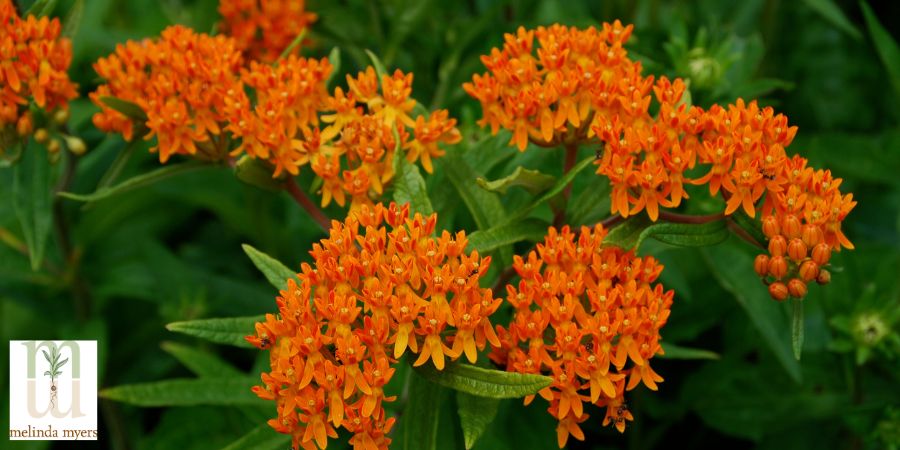
Butterfly weed
Design your rain garden just like you would other gardens in the landscape. Start with a plan, commit to doing soil preparation, and select plants suited to all the other growing conditions in your area. Place your rain garden on the downside of a slope at least 10 feet away from your house. Avoid creating rain gardens over septic systems, tree roots, utilities, and wells. Contact your local municipality or Department of Natural Resources for placement requirements and any restrictions or rebates for installing a rain garden.
DIY Sustainable Lawn
Lawns provide play areas, pathways throughout our landscape, and a backdrop for our gardens. High-maintenance lawns require lots of resources and time to manage. Creating a more sustainable lawn can help minimize the time and resources needed.
Perhaps the easiest place to start is to adjust your current maintenance practices and a willingness to accept a less-than-perfect lawn. Start this fall by leaving fall leaves on the lawn. Just mow over them when cutting the grass. As long as you can see the grass blades for the leaf pieces, the lawn will be fine. As the leaves decompose, they add nutrients and organic matter to the soil.
Raise the mowing height if you haven’t already done so. Taller grass develops deeper roots and is more drought-tolerant and better able to compete with weeds. Mow often, removing no more than one-third of the total height. This is better for the lawn, and the shorter clippings break down quickly, adding nutrients and organic matter to the soil. A season’s worth of clippings is equal to one fertilizer application.
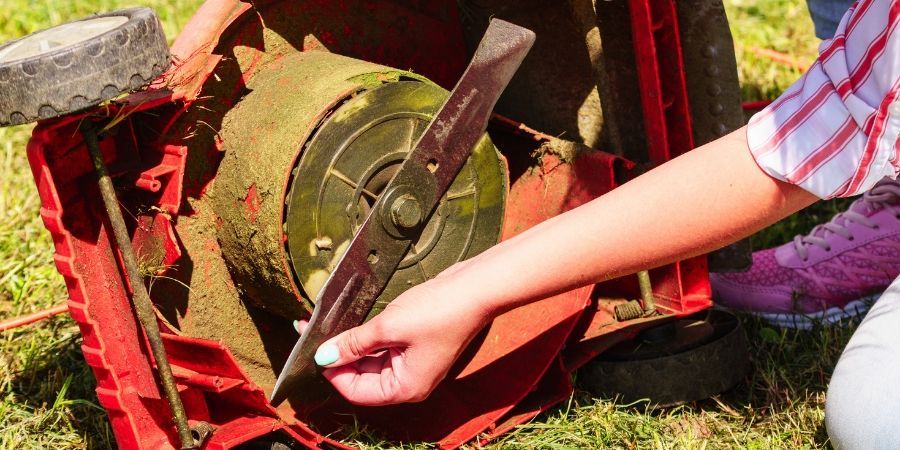
Make sure your mower’s blades are sharp. You’ll be able to mow faster, use up to 22% less fuel, and your lawn will need up to 30% less water. Further your sustainable efforts by using a push or electric mower. It’s good for the waistline and the environment.
Then consider allowing your lawn to go dormant during hot, dry weather. Proper watering helps keep your lawn healthy and outcompeting the weeds, but recent droughts, efforts to conserve water, and being more sustainable may mean a change of habit. Minimize foot traffic and play on dormant lawns, and don’t apply herbicides and fertilizer to dormant lawns. They both can damage the grass and the fertilizer feeds the weeds not the dormant grass.
Adjust your fertilization program by starting with a soil test to ensure you are using the right type and amount of fertilizer your lawn needs. Consider using a low-nitrogen, slow-release fertilizer like Milorganite that won’t damage your lawn even when the weather turns hot and dry. Milorganite contains 85% organic matter, feeding the soil as well as the grass. Avoid fertilizers with high levels of phosphorus unless recommended by your soil test. Research has shown Milorganite’s phosphorus binds to the soil, preventing it from leaching into the groundwater.
Fall is an important time to fertilize the lawn. An early September fertilizer application around Labor Day helps your lawn recover from summer stress and prepare for winter. A dormant fertilization with Milorganite for northern lawns around mid-November to Thanksgiving before the ground freezes encourages healthier growth and a greener lawn in spring. Always check for any local restrictions and blackout dates related to fertilizing lawns in your area.
Topdressing the lawn with ¼” to ½” of compost is another way to feed your lawn. It adds organic matter and nutrients while helping improve the drainage and water-holding ability of the soil.
Always sweep grass clippings, compost, and fertilizer residue off the walks and drives back into the lawn where it belongs. This simple step keeps unwanted nutrients, chemicals, and debris out of our waterways, sewers, and water treatment plants.
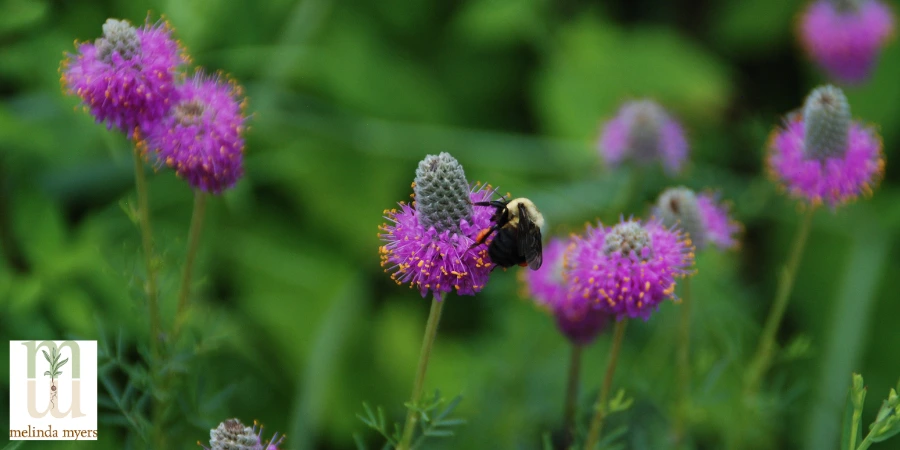
Bee on Dalea Purpurea
Then take some time to evaluate your options for making the lawn even more sustainable. Many gardeners are reducing the size of their lawn and expanding planting beds that attract and support songbirds and pollinators. Others are adding low-growing pollinator-friendly and nitrogen-fixing plants like clover and thyme to their lawns. And for those that still want a lawn, no-mow lawns, a mix of fescues, may be the solution. Before making any drastic changes, consult your local extension service for information on the best grasses and plants suited to the growing conditions and your gardening goals.
Compost and Repurpose Landscape Trimmings
Limiting the landscape trimmings and yard waste, leaving your landscape and the fertilizer, compost, and mulch brought in from outside sources, is another component of sustainable gardening. Landscape trimmings are a perfect example. Instead of discarding fall leaves, shrub and tree trimmings, and plant-based kitchen scraps in the landfill, compost them into a valuable soil amendment.
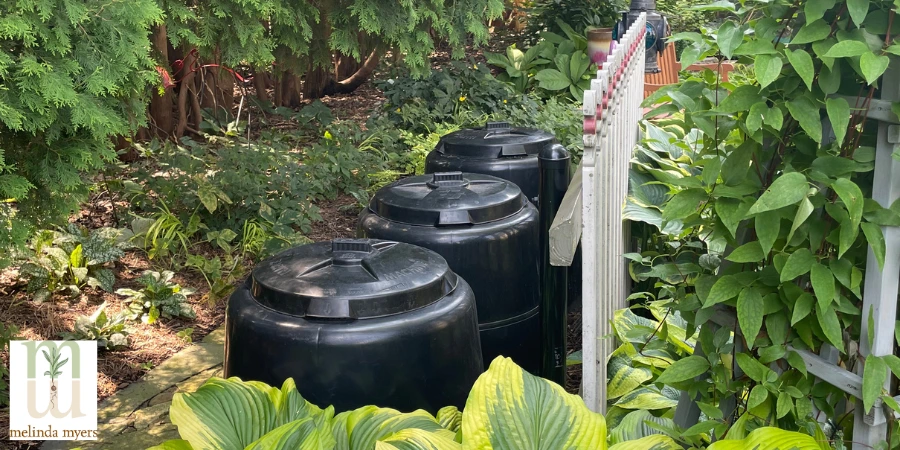
Compost bins in the landscape
Fall, when landscape trimmings are at a peak, is a great time to start composting. It is as simple as placing your plant debris in a heap and letting it rot. The materials will eventually break down over time. The more effort you put into the composting process, the sooner you will have a finished product. You can create an efficient compost pile with a mix of green, nitrogen-rich, and brown, carbon-rich, materials that break down into compost more rapidly than a random mix if trimmings. Start with an 8 to 10” mixed layer of browns like fall leaves, dried plant debris, cornstalks, and straw, and greens like plant-based food scraps, herbicide-free grass clippings, and fresh vegetable trimmings.
Cover this with finished compost or soil and sprinkle the surface with 3 cups of Milorganite. The nitrogen and 85% organic matter in Milorganite help feed the microorganisms that break down the raw materials into compost. Repeat until the pile is at least 3 feet high and wide. Cover the top and edges with browns and moisten the pile to the consistency of a damp sponge.
Turn the pile occasionally, moving the material from the center to the outside and the outer layer of materials to the center. Repeat until your pile consists of crumbly and brown finished compost. Your efforts will be rewarded with a wonderful amendment for your garden and containers.
Only use insect- and disease-free plant trimmings. Do not add meat, dairy or fat that can attract rodents. Keep invasive plants, perennial weeds, and those that have gone to seed out of the pile. Most of our compost piles do not reach high enough temperatures to kill insect pests, disease, weed seeds, and invasive plants.
Compost bins are designed to contain and hide the compost process. Purchase or make one that fits your landscape and gardening style. You can find plans online for making your own, and many plans use repurposed items, helping you save money and reduce waste. Tumbler composters allow for easier filling, turning, and emptying. Consider a dual bin tumbler or use two tumblers for faster results. Use one bin for stockpiling materials and the other for actively composting.
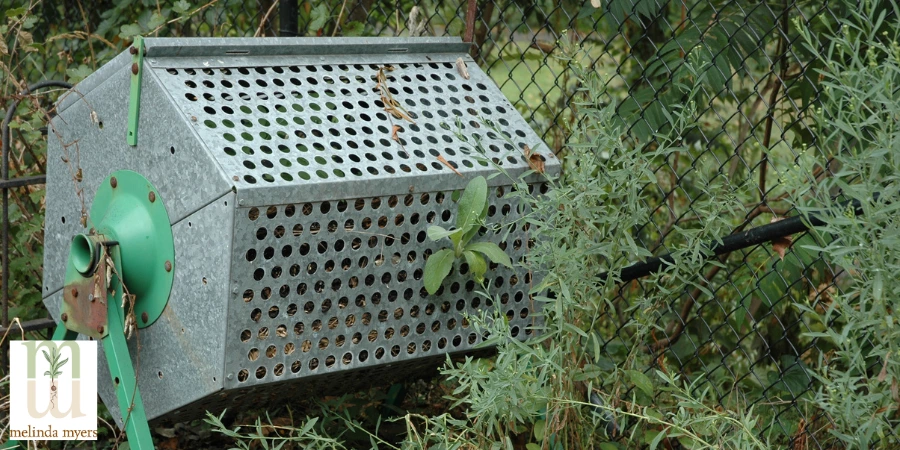
Compost tumblr
Always check with your municipality before you begin composting. Some have strict guidelines or restrictions, while others offer rebates.
Keep Water Where it Falls
Look for ways to capture and keep rainwater on your landscape and out of the storm sewers. A sustainable landscape filled with healthy plants is one part of the solution. Increase this benefit by growing more native plants suited to the available space, growing conditions and garden design. The above-ground growth helps slow the flow of water while their deep roots create channels for water to enter the soil. As the water passes by the roots and through the soil, dust and other impurities are removed.
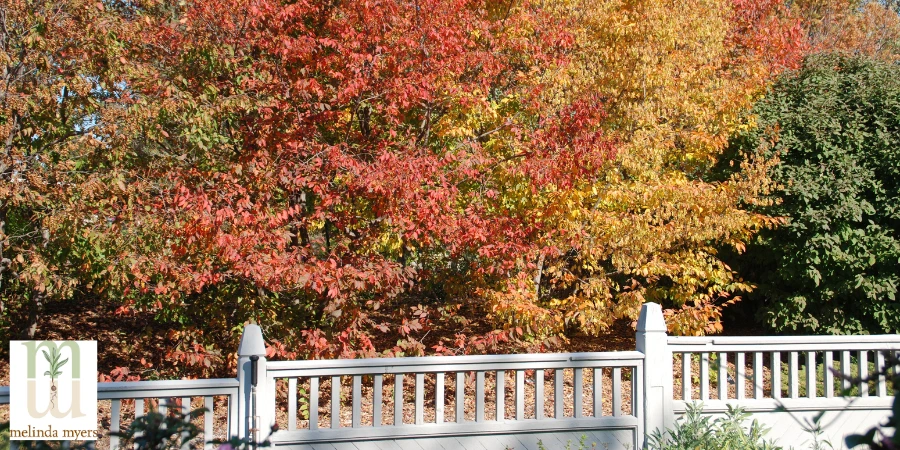
Carpinus caroliniana
Plant trees where space allows. We all learned that trees were important for cleaning dust and pollutants out of the air, reducing energy costs, and providing shade. They are also important in managing stormwater. Trees intercept rainfall, allowing some to evaporate back into the atmosphere. They also help slow the speed of the rainfall, reducing the risk of erosion and runoff. And their roots absorb the rain that enters the ground to be used by the plants and eventually released in a gaseous form back into the atmosphere
When adding walks and pathways, consider permeable solutions. Steppers interplanted with groundcovers, woodchips and grassy paths allow more water to be absorbed than non-permeable hard surfaces. Permeable pavers are an option for patios, walks and even drives. Various designs allow water to penetrate and enter the soil. As always evaluate the best option for your climate, design goals and budget.
Converting your existing landscape, lawn and gardens to be more sustainable can seem overwhelming. Even small changes made this fall can make a big impact and may be the best place to start. Then look for opportunities to incorporate more sustainable designs, plantings and maintenance practices into your landscape.

